What's New
Displaying results 4091 - 4100 of 4922
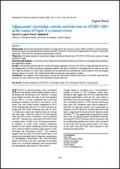
Resource | Reviews and Snapshots,
Sexual and reproductive health of young people has become a major health problem in recent decades. Recent and rapidly increasing Human Immune Defi ciency Virus (HIV) rates show an urgent need for Sexually Transmitted Infections (STIs) and HIV prevention interventions in Nepal. This paper attempts to assess knowledge, attitude and behaviour on STIs/HIV/AIDS in the context of young peoples of Nepal.

Resource | Fact Sheets,
HIV Surveillance Activities in Nepal:
- Nepal’s priority in HIV surveillance is strengthening of the Second Generation Surveillance system.
- Routine case reporting: National Centre for AIDS and STD Control (NCASC) receives HIV, AIDS and STI case reports from HIV Testing and Counseling (VCT), ART and PMTCT sites
- Regular Integrated Biological and Behavioural Surveys (IBBS) among High Risk Groups (Female Sex Workers, Injecting Drug Users, Men having Sex with Men, Clients of Sex Workers, and Migrants) is being conducted by epidemiological regions in every two year to track the changes in the HIV prevalence and associated risk behaviours.

Resource | Guidelines,
The purpose of this operational tool is to raise awareness of how gender inequalities affect women's access to and experience of HIV/AIDS programmes and services and to offer practical actions on how to address or integrate gender into specific types of HIV/AIDS programmes and services.
The target audience for this tool comprises primarily programme managers and health-care providers involved in setting up, implementing or evaluating HIV/AIDS programmes. It includes programme managers and health-care providers in the public sector at the national, district and facility levels, as well as those running private sector programmes, e.g. nongovernmental organizations (NGOs).
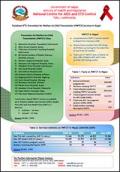
Resource | Fact Sheets,
PMTCT in Nepal - Comprehensive PMTCT service started in Nepal from February 2005. - Government provides free ARV drugs and follow‐up testing for the baby free of cost from 18 months. - There are 17 PMTCT sites, of which 16 sites offer Pediatric ART and 5 sites provide CD4 testing onsite.
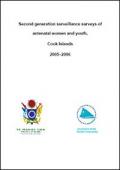
Resource | Publications,
Cook Islands are located between French Polynesia and Fiji Islands in the South Pacific Ocean. In 2006, the resident population of Cook Islands was estimated at 11,800 persons. The residential population has been decreasing since 1996, and there has been a population shift from the outer islands to the main population centres in Rarotonga and Aitutaki.
In 2005 and 2006 the Cook Islands Ministry of Health, with technical assistance from the Secretariat of the Pacific Community, conducted second generation surveillance (SGS) surveys of antenatal women and youth. This report summarizes the results of the SGS surveys in the two population groups.

Resource | Publications,
This study used household survey data from Cambodia, Thailand and Viet Nam to examine the situation of orphans relative to children in poverty regarding access to essential needs and services, focusing on basic material needs and education outcomes. This study made use of summary statistics and multivariate regression analysis to determine whether poverty accounts for the education gap between orphans and non-orphans, or whether other factors also contribute to the lower education outcomes of orphans. A similar analysis was done on children’s possession of basic materials – namely a blanket, a pair of shoes and two sets of clothes - which exemplify the capacity of families to protect and care for children.
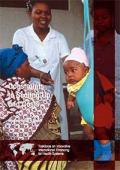
Resource | Publications,
Since the adoption of the Millennium Declaration, total development assistance for health (DAH) has more than doubled and has saved the lives of millions of individuals and protected the livelihoods of their families. But most low-income countries are failing to make much progress towards the child and maternal mortality MDG targets, and the financial crisis threatens to increase infant deaths in developing countries by 200,000-400,000.
Progress towards all the health MDGs is impeded by insufficient funding, poor use of resources, and fragmented financing flows.
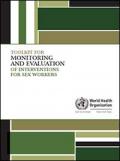
Resource | Tools,
This toolkit focuses on TIs for FSW populations. It draws upon almost two decades of experience from programmes implemented by the World Health Organization’s (WHO) Western Pacific and South-East Asia Regions (WPRO/SEARO). While examples and issues specific to FSWs are highlighted, many of these issues would be common to male sex worker (MSW) interventions, and the approaches can be adapted to meet the needs of MSWs.
This toolkit aims to demonstrate how a small number of recommended indicators can provide critical information to guide interventions. These tools can be used at different levels of management to track the progress of a programme and focus efforts on achieving targets. Special attention is paid to how data can be used by on-site managers to help them make periodic decisions.

Resource | Publications,
This assessment of HIV prevalence among people injecting drugs in the four cities of Mandi Bahauddin, Rawalpindi, Gujranwala and Sheikhupura was conducted in July-August 2009. This assessment includes city wise mapping for size estimates of people injecting drugs, identification of sites where injecting is prevalent, estimates of HIV prevalence among people injecting drugs through provision of VCCT services (confirmation of reactive samples in the Public sector laboratories) and collection of relevant behavioral data.
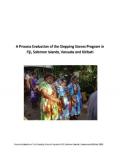
Resource | Publications,
The process evaluation of the Stepping Stones (SS) program in Fiji, Solomon Islands, Vanuatu and Kiribati was conducted throughout June 2009 to January 2010 period. The aims of the evaluation were to; 1) describe and share the lessons learnt on the different processes used to deliver the program in current countries, 2) make recommendations on the future sustainability and strategic direction of the program and 3) to make recommendations on the monitoring and evaluation (M&E) methodologies to ensure accurate and reliable collection of SS data for future outcome orientated evaluations.





